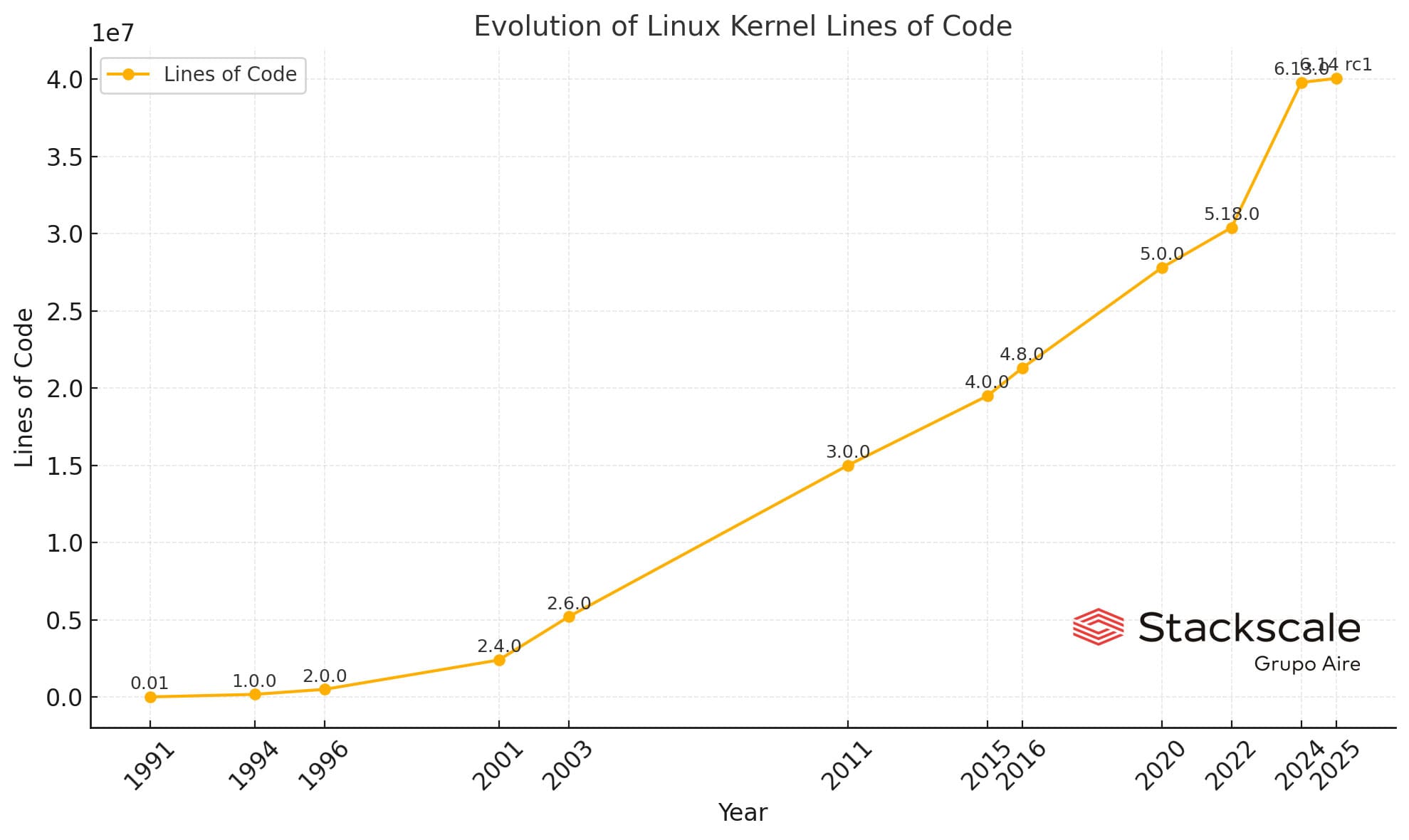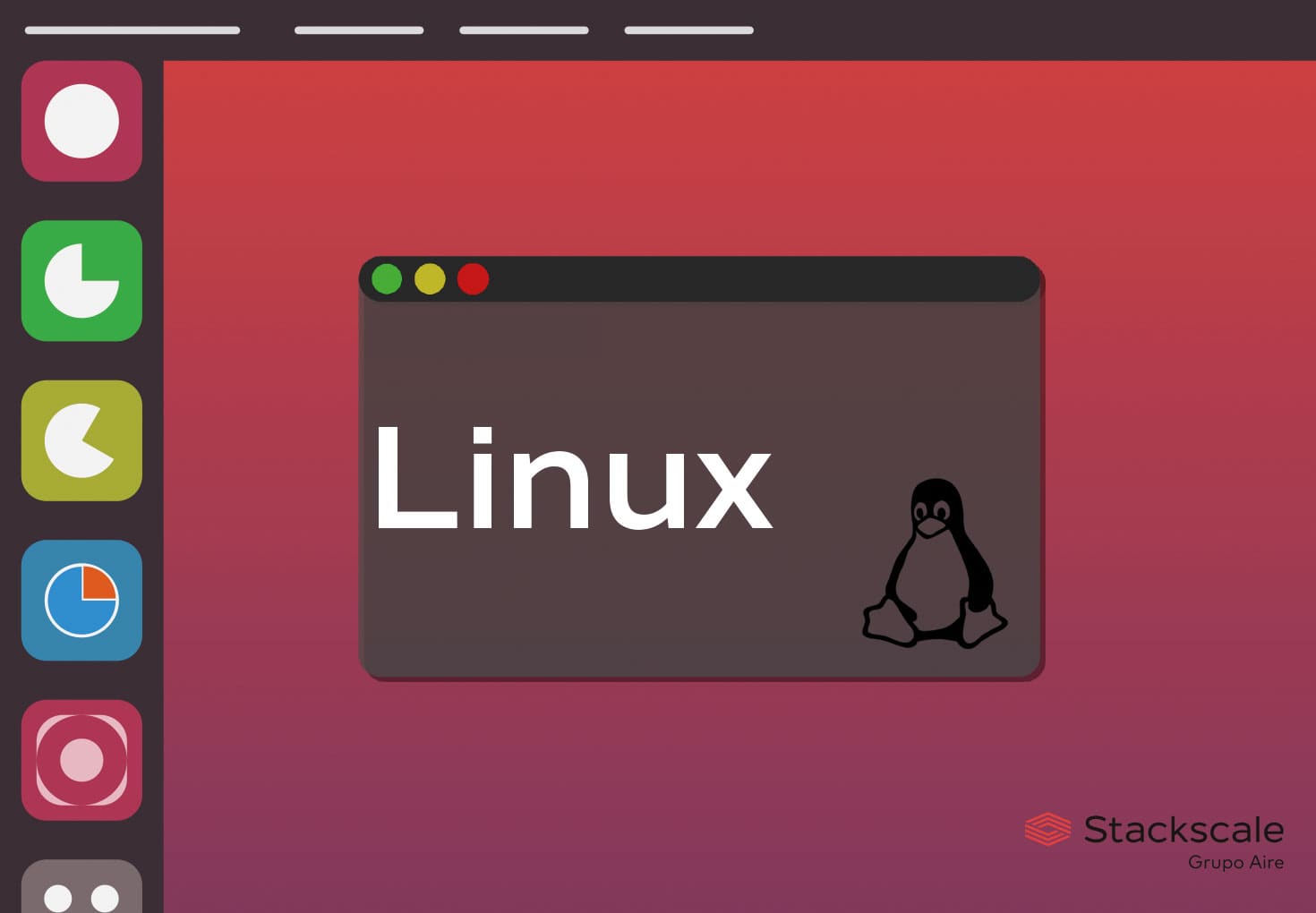The Linux kernel, the backbone of countless open-source operating systems, has achieved an impressive milestone: surpassing 40 million lines of code. This achievement, reached with version 6.14 rc1, reflects Linux’s steady growth and the strength of its collaborative development model, which unites thousands of developers worldwide.
Since its creation in 1991 by Linus Torvalds as an academic project, the Linux kernel has evolved to power diverse technologies, from servers and supercomputers to smartphones and IoT devices. This progress reinforces its position as one of the most critical pillars in today’s technological landscape.
Steady Growth: From the Classroom to the Technological Vanguard
In 2015, the Linux kernel reached 20 million lines of code, a significant number at the time. Ten years later, this figure has doubled, with an estimated growth rate of 400,000 additional lines of code every two months. By the end of 2024, the kernel contained 39,819,522 lines, reaching 40,063,856 lines with the release of the first release candidate of Linux 6.14.

This growth is no coincidence—it is the result of decades of collective work and the kernel’s ability to adapt to the needs of an increasingly diverse technological ecosystem.
What Drives the Growth of the Linux Kernel?
The continuous expansion of the Linux kernel is due to several key factors:
1. Expanding Hardware Support
Linux is renowned for its versatility and compatibility with a wide range of devices and architectures, from x86 and ARM to RISC-V.
- Hardware architectures: Support for these architectures alone accounts for more than 4.5 million lines of code.
- Drivers: The most notable example is the driver for AMD Radeon graphics cards, which includes 5 million lines of code between the driver itself and its documentation.
2. Efficient Modularity
Despite the kernel’s massive size, not all lines of code are executed on every system. Thanks to its modular design, drivers and components are only loaded when the corresponding hardware is present, optimizing resource usage.
3. Documentation and Code Quality
The developer community has worked diligently to document the code and include useful comments, making it easier for new contributors to participate and ensuring the kernel’s high quality.
The Debate Over Kernel Size: Growth vs. Bloat
The kernel’s growth has sparked debates in the tech community, particularly about the concept of “bloat” (unnecessarily large code).
- Arguments for growth: Adding more features and support makes Linux adaptable to a wide range of devices and environments, from enterprise servers to embedded systems.
- Criticism of bloat: Some developers argue that the kernel could benefit from further optimization by removing redundant features. However, proposals like separating drivers into external modules have proven ineffective or even counterproductive.
Highlights of Linux 6.14 rc1: Beyond the Numbers
In addition to surpassing the 40-million-line milestone, Linux 6.14 rc1 introduces significant improvements:
- “Copilot” Key Support: Introduced by Microsoft, this new key is now configurable in desktop environments.
- Gaming Enhancements: The XPad driver expands compatibility with newer gaming devices.
- Audio Improvements: Updated support for the latest audio hardware enhances multimedia experiences.
- Faster Suspend/Resume: Optimized times for suspending and resuming systems benefit laptop users.
- Touchscreen Compatibility: Improved support for Intel-based touchscreen devices enhances the user experience on modern hardware.
A Collaborative Model Shaping the Future
Surpassing 40 million lines of code is not just a symbolic milestone—it highlights Linux’s impact and relevance in the tech industry. From the most powerful supercomputers to tiny IoT devices, the Linux kernel continues to be a cornerstone of modern computing.
This growth also underscores the strength of the collaborative development model, where thousands of developers, companies, and users actively contribute to its evolution. This ensures that Linux remains competitive against other operating systems, proving that open-source software can lead technological innovation on a global scale.
Evolution of Lines of Code by Kernel Version
| Year | Kernel Version | Lines of Code |
|---|---|---|
| 1991 | 0.01 | ~10,000 |
| 1994 | 1.0.0 | ~176,250 |
| 1996 | 2.0.0 | ~500,000 |
| 2001 | 2.4.0 | ~2,400,000 |
| 2003 | 2.6.0 | ~5,200,000 |
| 2011 | 3.0.0 | ~15,000,000 |
| 2015 | 4.0.0 | ~19,500,000 |
| 2016 | 4.8.0 | ~21,300,000 |
| 2020 | 5.0.0 | ~27,800,000 |
| 2022 | 5.18.0 | ~30,400,000 |
| 2024 | 6.13.0 | ~39,800,000 |
| 2025 | 6.14 rc1 | ~40,063,856 |
Notes:
- Estimates: Numbers vary depending on whether comments, documentation, and blank lines are included.
- Consistent Growth: The kernel has grown steadily due to the addition of support for new devices, architectures, and features.
- Modularity: Despite its size, thanks to its modular design, not all lines of code are used on every system.
Linux: A Promising Future
The Linux kernel has not only reached a historic milestone but has also solidified its role as a fundamental tool in technology. As the world continues to evolve, Linux remains a model of innovation, collaboration, and resilience in open-source software.
The achievement of 40 million lines of code is undoubtedly a significant step in a journey that will continue to shape the technological landscape for decades to come.




